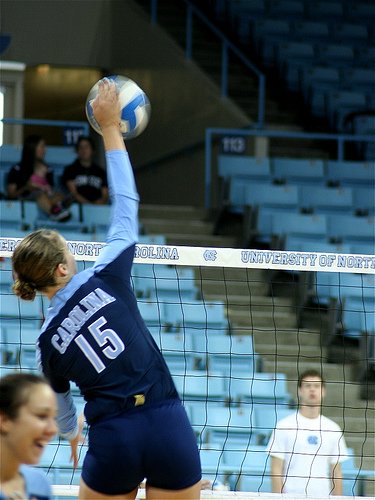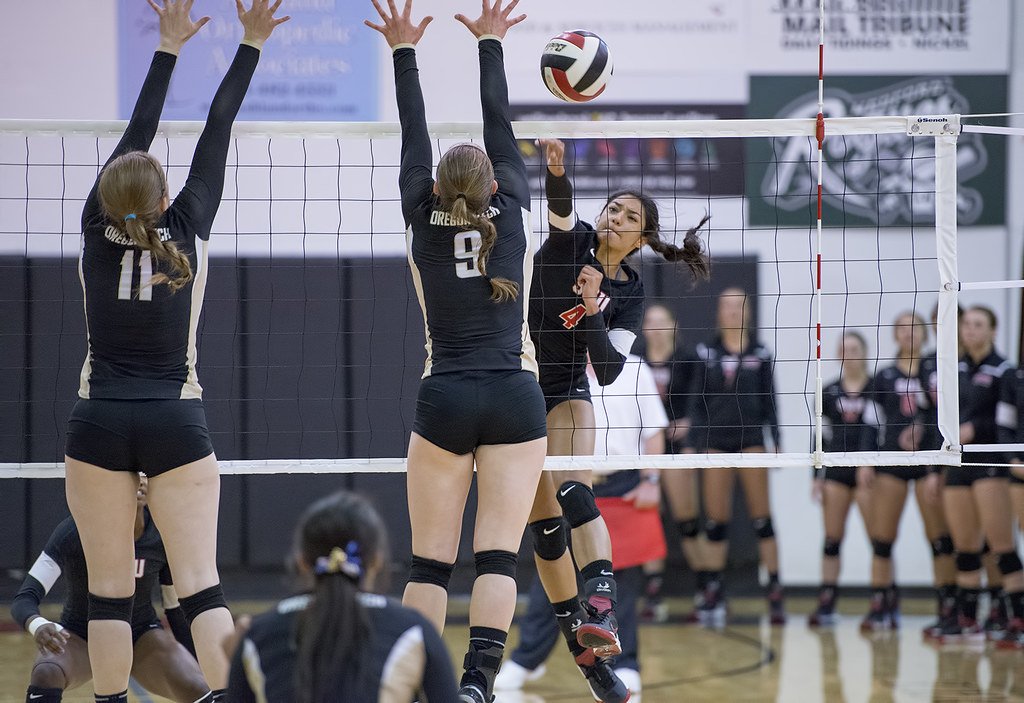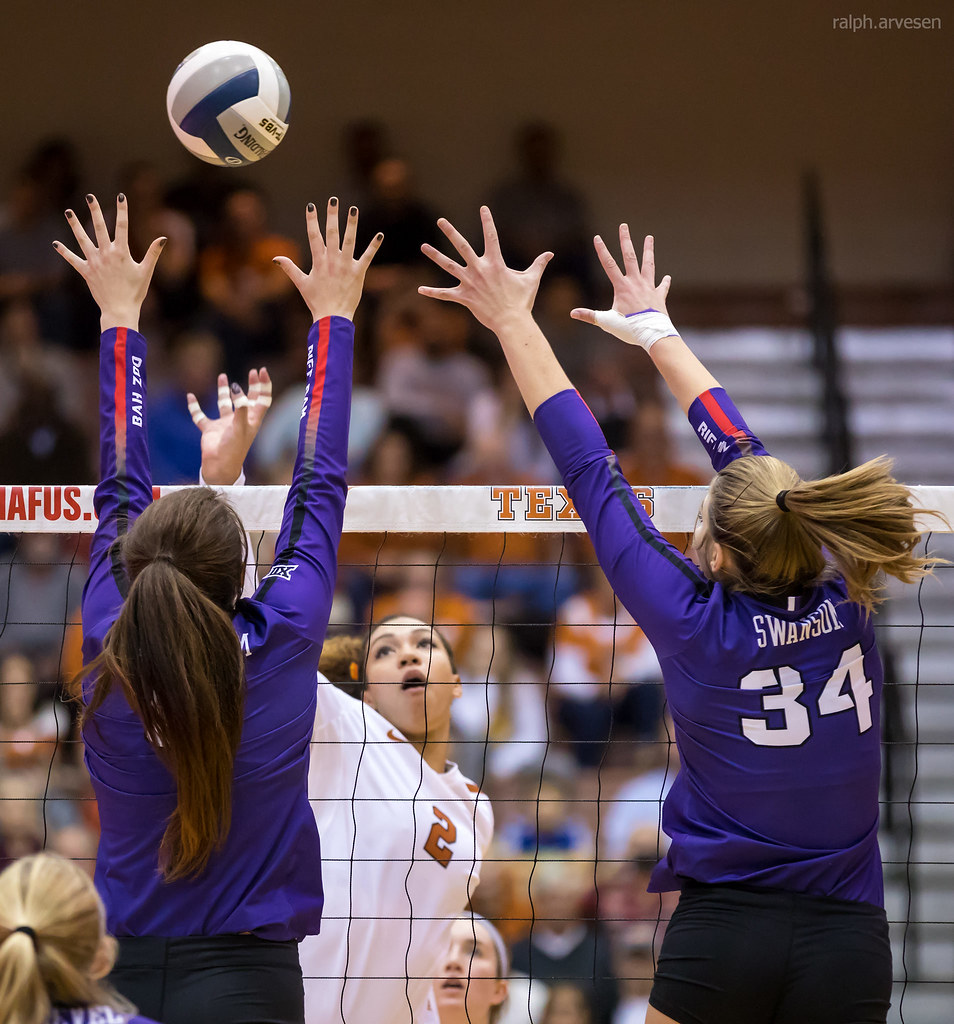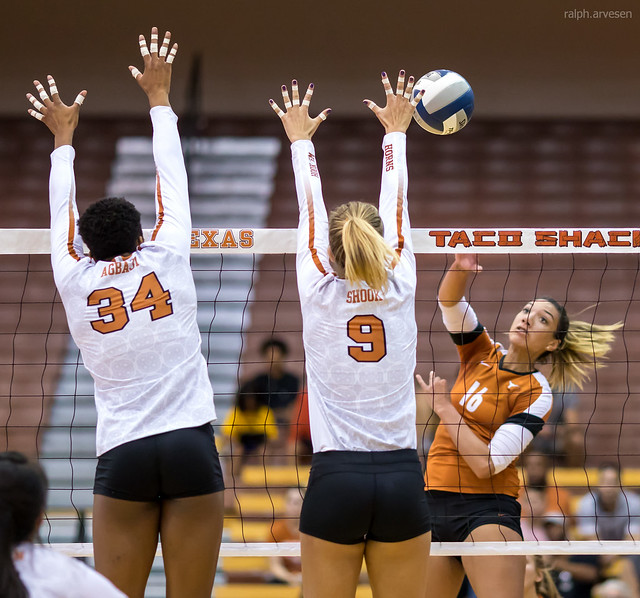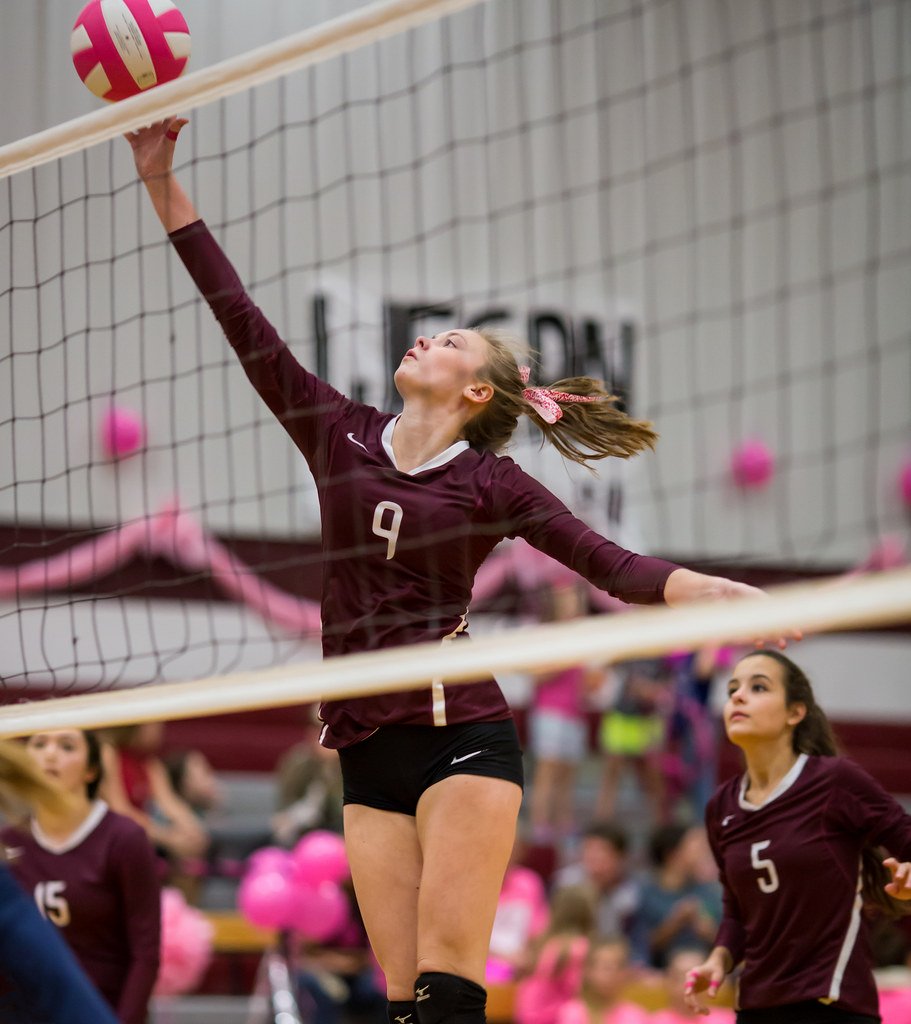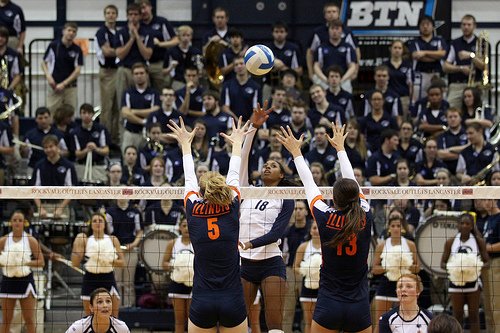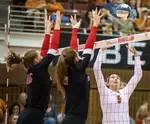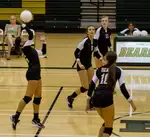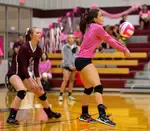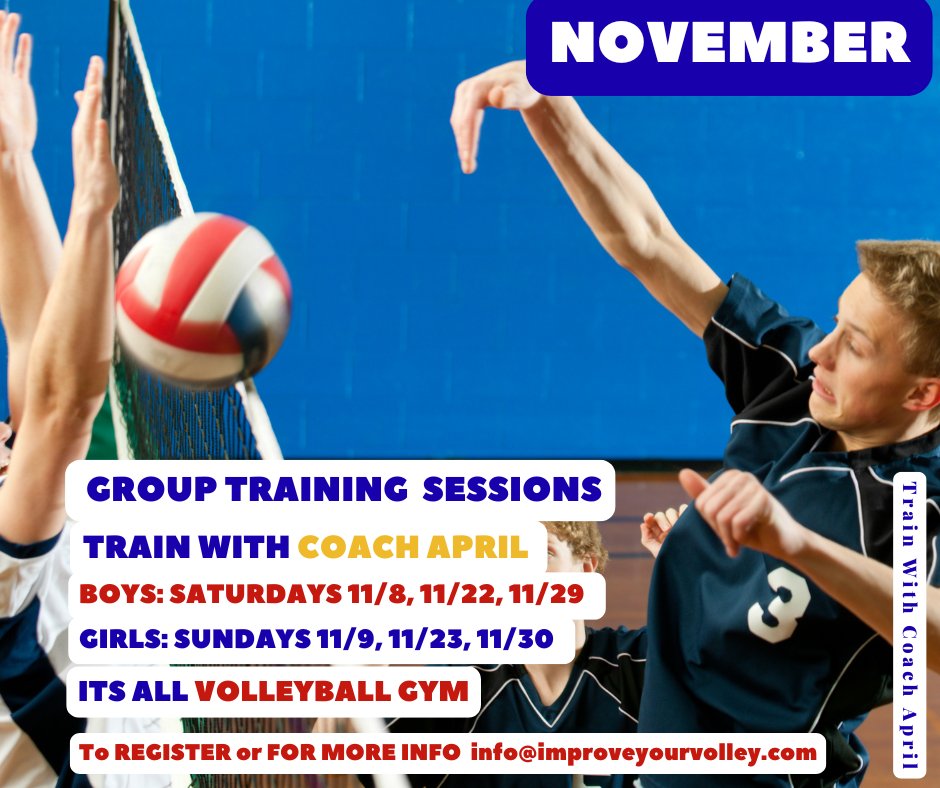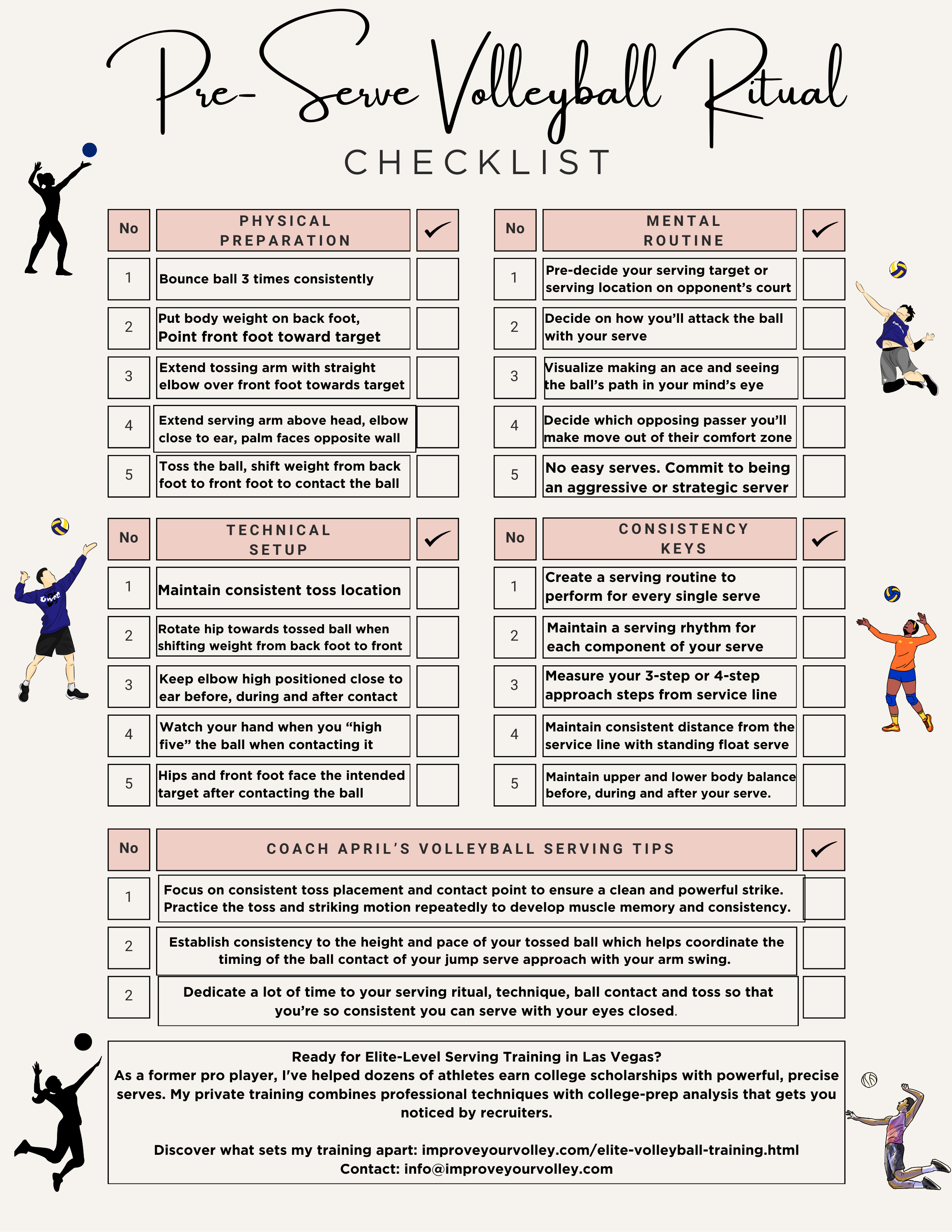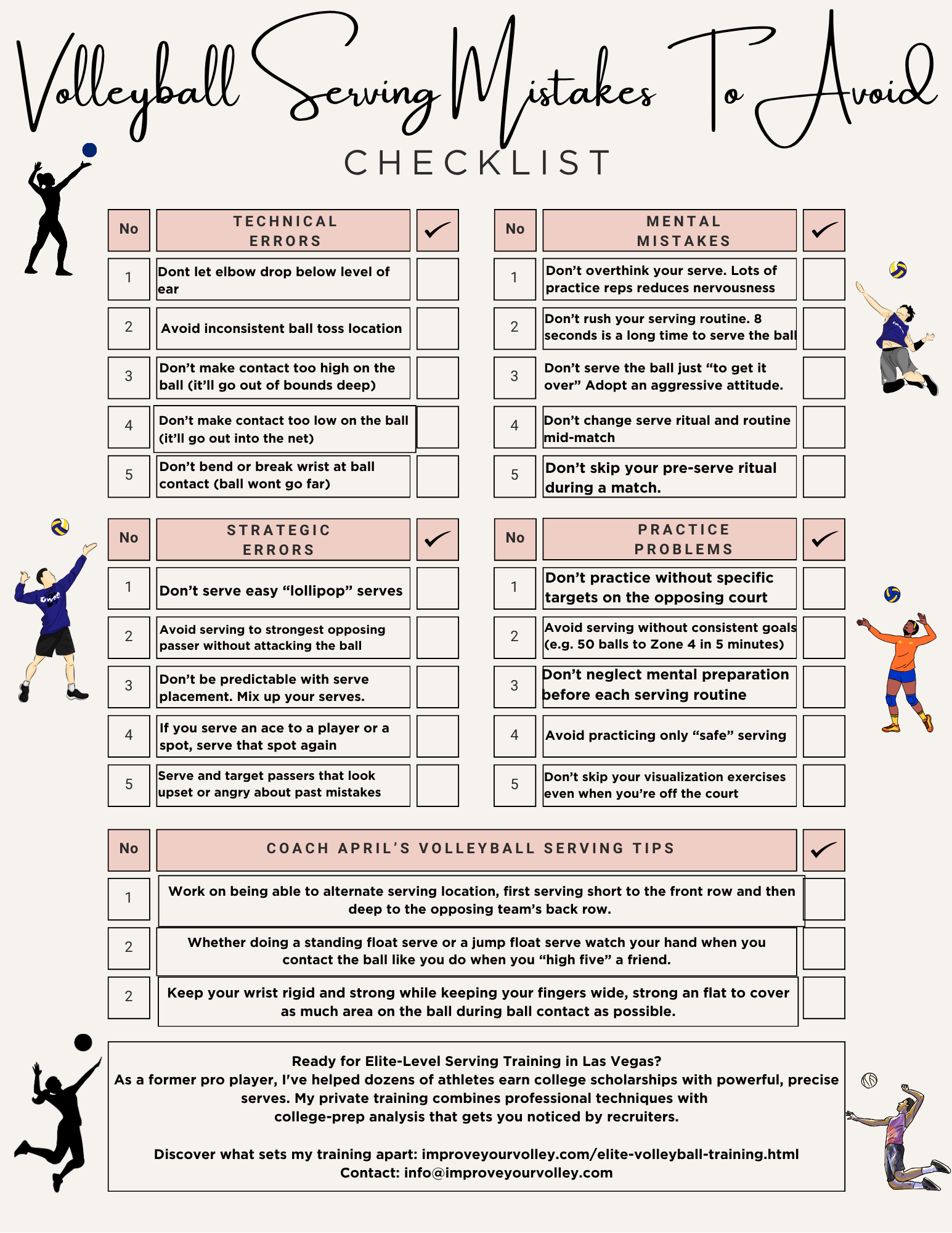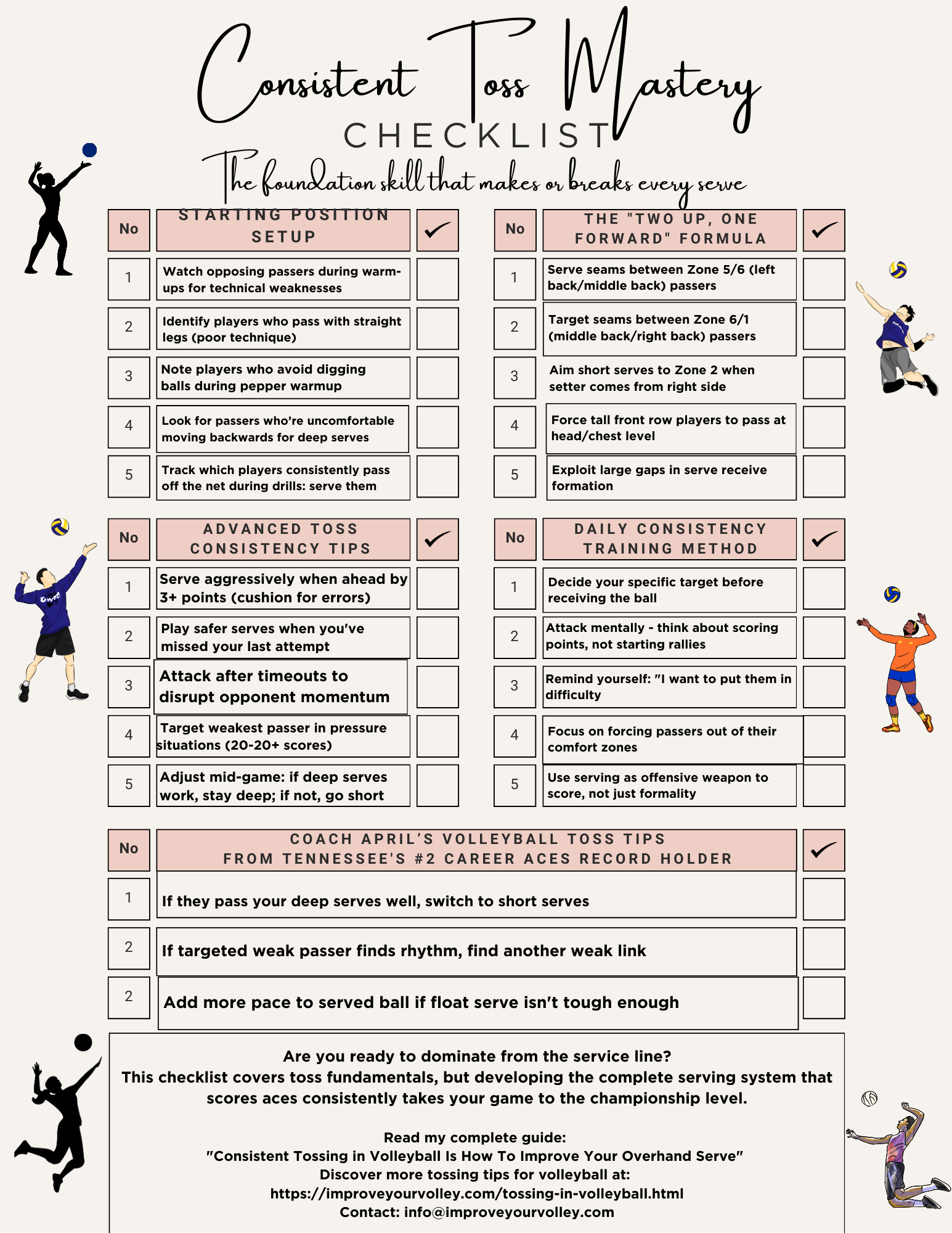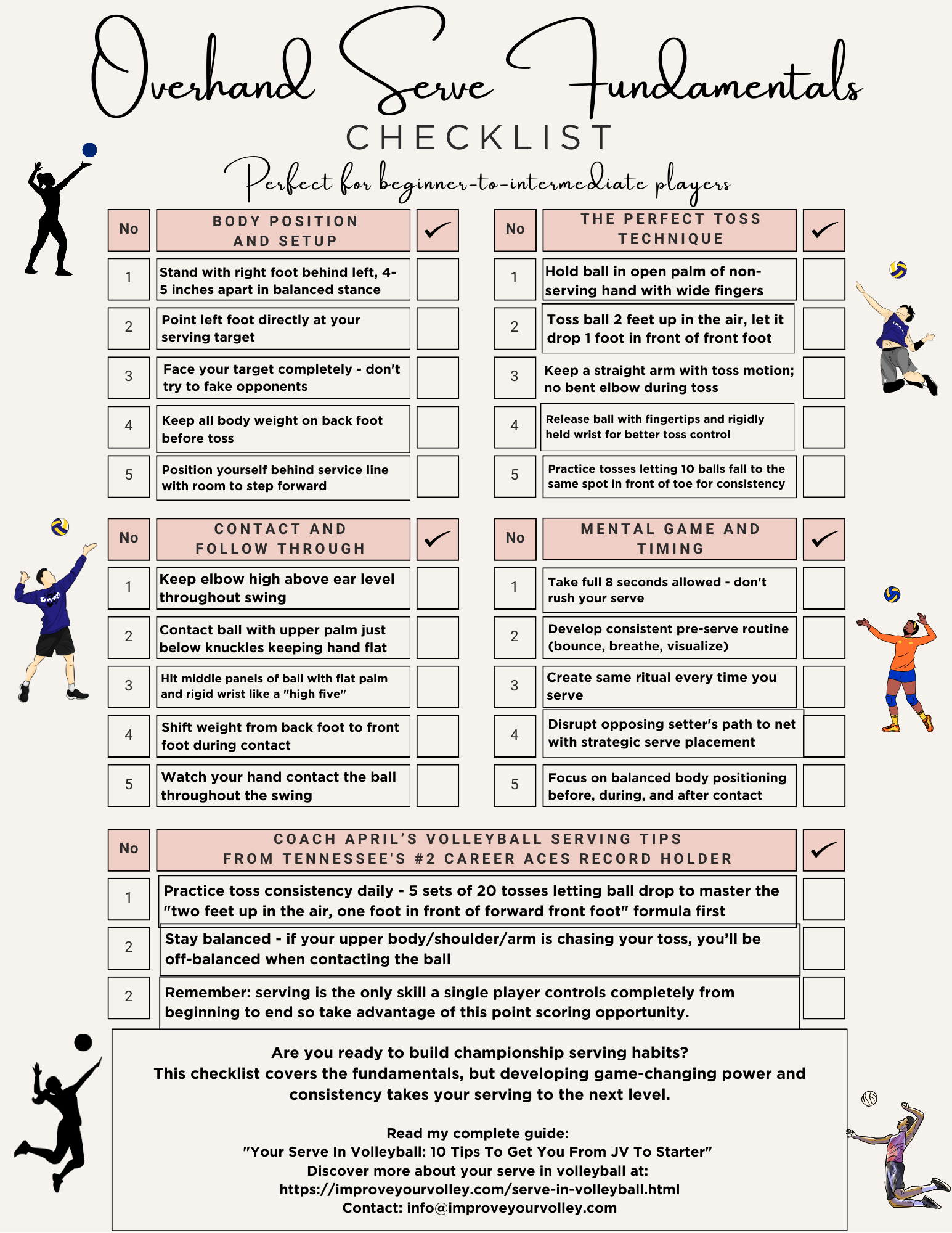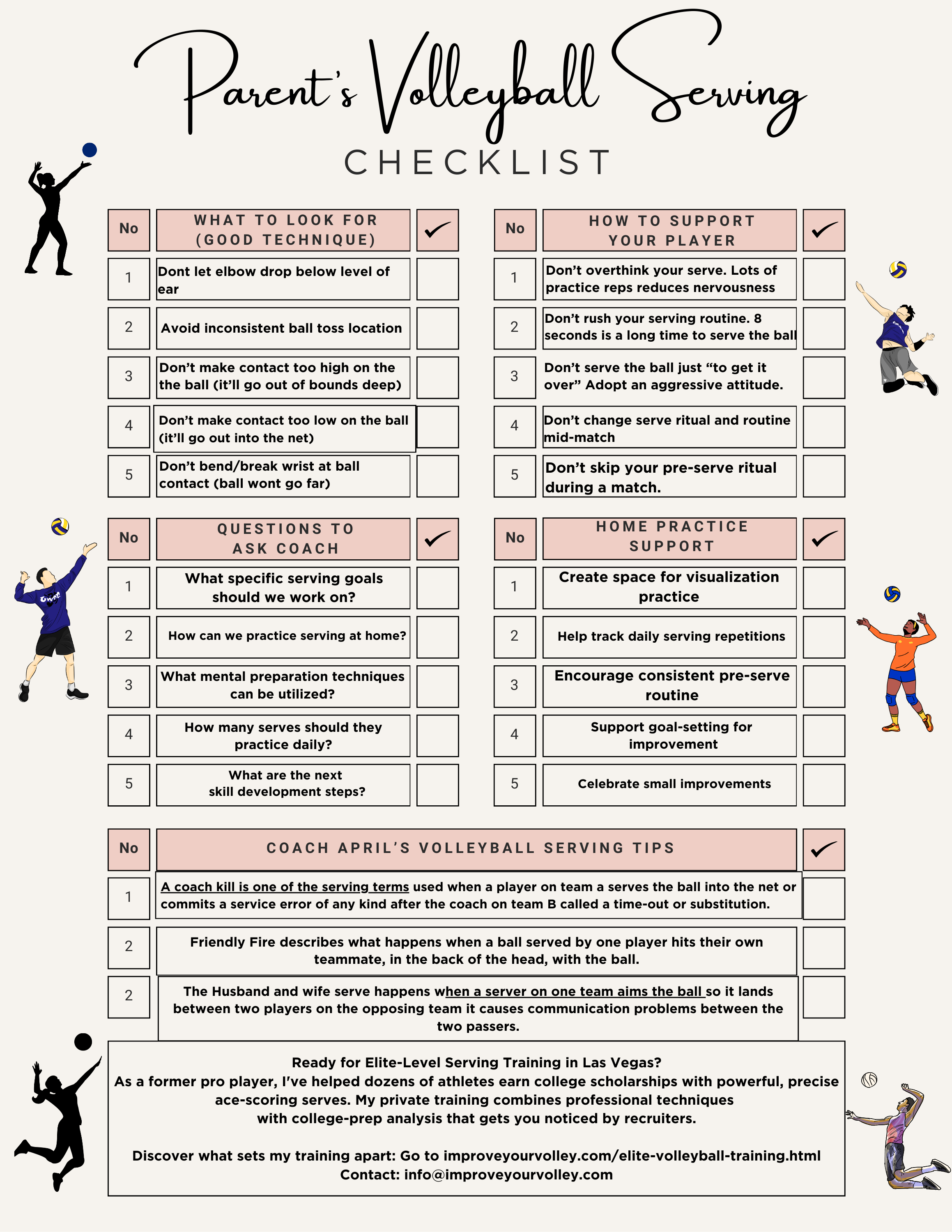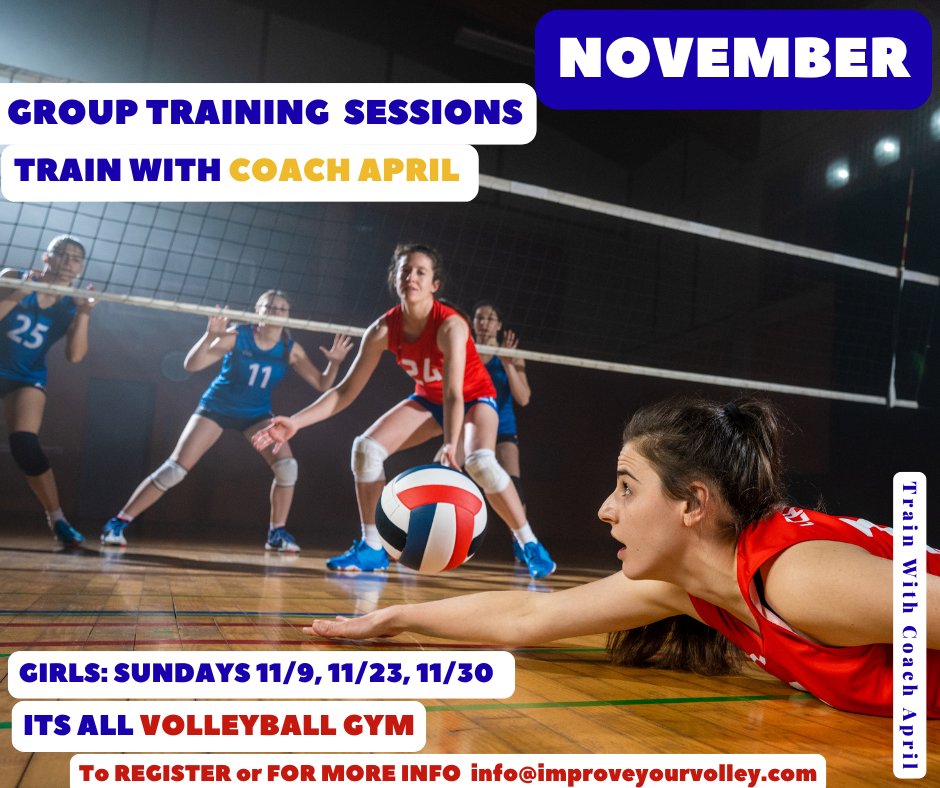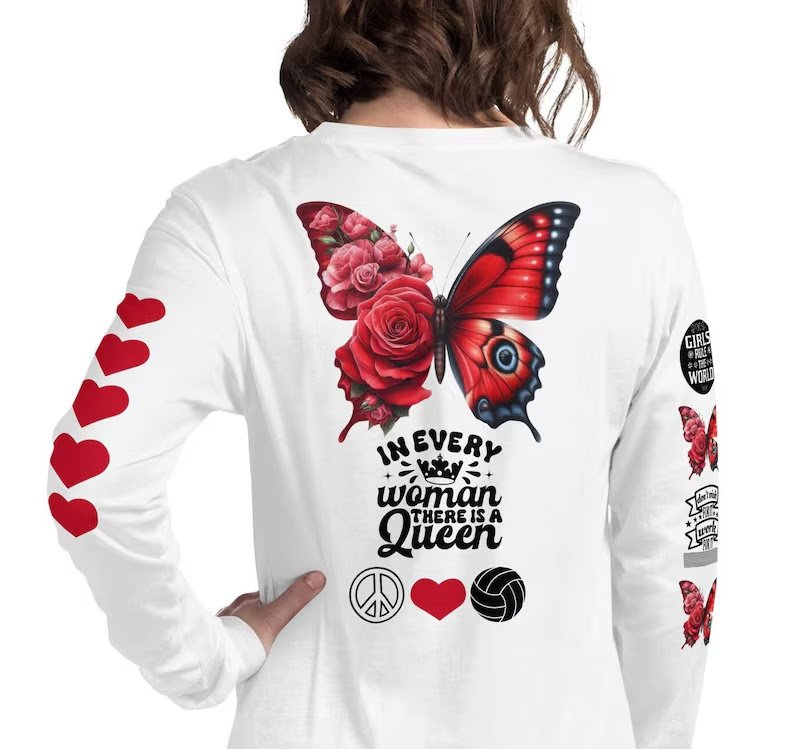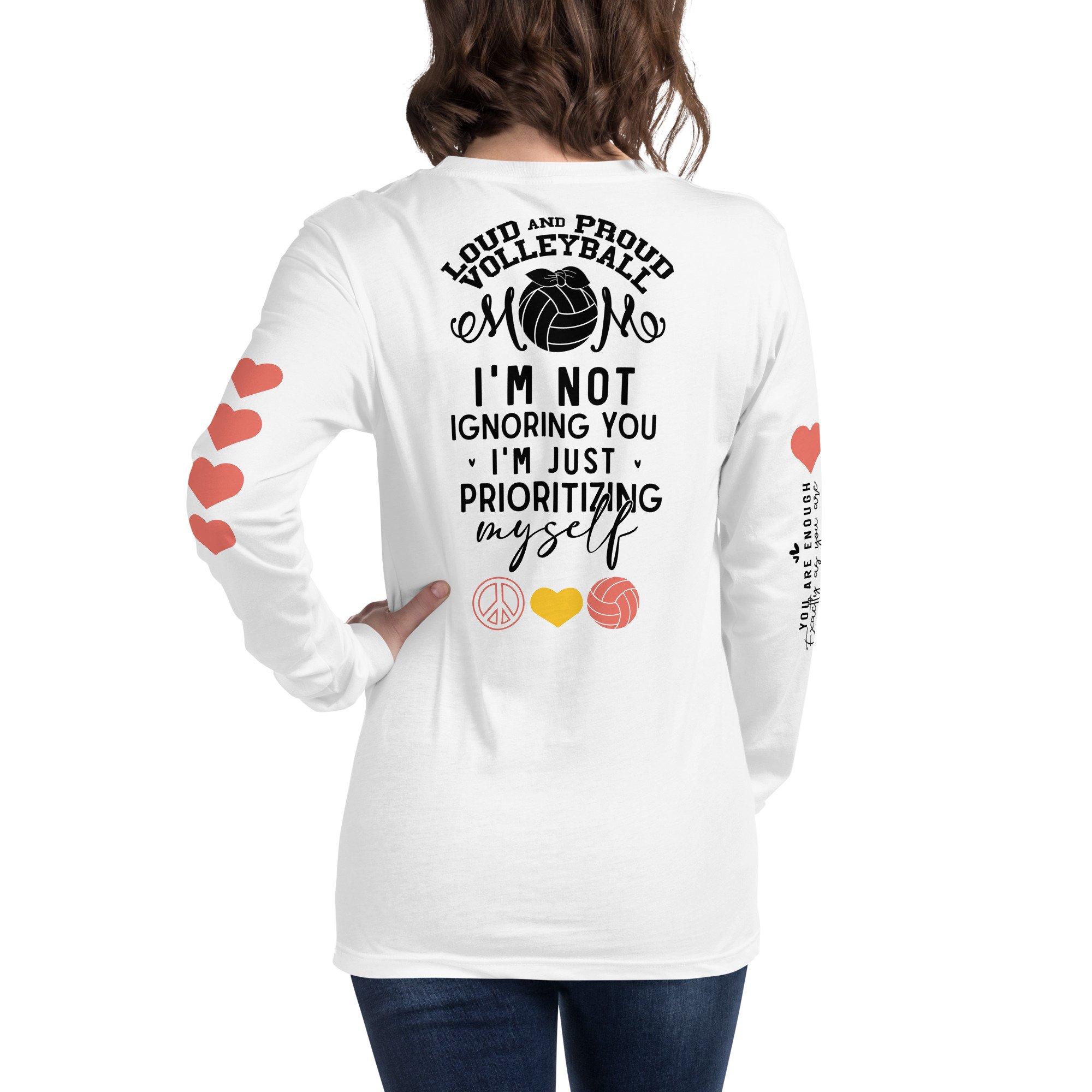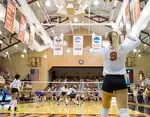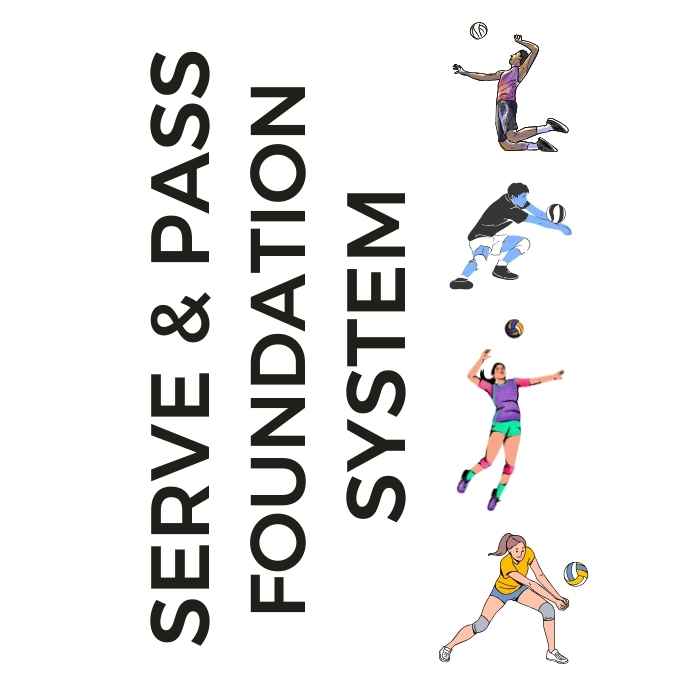
Serve + Pass Foundation System: The Complete Skills Arsenal The two-skill mastery system that transforms inconsistent players into the athletes coaches build their lineups around. Stop Struggling With The Two Most Important Skills In Volleyball!
- Improve Your Volleyball with Coach April
- Words Used in Volleyball
- Volleyball Hits
Volleyball Hits 16 Types of Spiking, Attacking And Hitting Terms
Why do elite hitters score in 16 different ways while others only know 2? Master all 16 volleyball hits and become unstoppable. Full terminology breakdown.
Hitters star in the show! Celebrate your position with this hitter volleyball shirt designed for the running backs of volleyball.
Watch any high-level volleyball match and you'll notice something: the best hitters don't just spike the ball hard every time.
They have an entire arsenal of attacks - tips, tools, wipes, and shots you've probably never even heard of.
This variety is what makes them unstoppable.
Here's what separates average hitters from great ones: Great hitters can score in 16 different ways, while average hitters only know one or two.
Think about it - if defenders know you can only hit cross-court, aren't they going to camp there waiting for you?
But when you can tip, tool the block, hit line, or drop a cobra shot, suddenly you're unpredictable and dangerous.
Tooling the block is a slang term for wiping the block. They both describe the act of spiking the ball so that you deliberately aim for the outer hand of the blocker who's attempting to block you. Watch as my Vegas Volley 18s and Coronado State champion, Treydon Balthazar tools the block in order to get this point.
Whether
- you're tired of getting blocked,
- want to expand your attacking options, or
- simply need to understand what your coach means by 'wipe the block,'
this guide breaks down every type of volleyball hit you'll encounter.
Master these 16 different volleyball attacks, and you'll transform from a one-dimensional hitter into a complete offensive weapon.
What are the different types of volleyball hits?
attack, hit, spike, kill, wipe the block, tool the block, spike approach, tip, cobra, pokey, down ball, free ball, seam, cross court hit, line hit, cut shot
My outside hitter Myla Matavao uses a deep volleyball tip during this long rally before getting a second chance to hit the ball hard to win a point for our team.
Volleyball Hits
Types of Volleyball Spikes
Ever notice how the best hitters seem to score even when they're perfectly blocked?
That's because they've learned how to do this next technique well...
Hitters star in the show! Celebrate your position with this hitter volleyball shirt designed for the running backs of volleyball.
Type of Volleyball Hits: The Wipe
The wipe describes the wiping action of a spiker's arm motion when the attacker aims the ball for an opposing blocker's outside hand.
The blocking arm and hand closest to the antenna presents a target that the spiker aims for, so when the ball deflects back off the hand, it travels out of bounds, outside the sideline on the hitter's side or the blocker's side off the court.
When the hitter wipes the block for a point, it means the blocker was the last person to touch the ball before it lands out of bounds, outside of the sidelines.
If you could turn the opponent's block into your advantage, wouldn't that make you nearly impossible to stop?
That's exactly what tooling the ball accomplishes.
Types of Volleyball Hits: The Tool
Tooling the block is a slang term for wiping the block. They both describe the act of spiking the ball so that you deliberately aim for the outer hand of the blocker who's attempting to block you.
Your goal is to do this in a way that the ball gets deflected back to your court but outside of the sideline, so it bounces outside of the court, on your team's side.
This is an effective point scoring hitting strategy because it's hard for diggers to react to a ball that's been deflected by the block.
Sofia Hamm my Vegas Volley 18s outside hitter uses two different volleyball hits in this rally to score a point for our team.
Think about this....
What's more frustrating for blockers - a ball that goes through them or over them?
Smart hitters know when to use finesse instead of power.
Types of Volleyball Hits: The Tip
A tip is an attack hit a spiker uses as an option to a hard hit...by
- completing a spike approach for a hard hit then
- at the height of the spike jump and after the arm swing the hitter contacts the ball with the tips of their fingers
- guiding the ball up and over the block, and
- over the net in the direction of where they want the ball to fall on the opposing court
Types of Volleyball Hits: The Cobra
Usually done in beach volleyball, the spiker uses their straight hand with the palm down to contact the ball with their fingertips.
Types of Volleyball Hits: The Pokey
This is an attack hit often used when the ball gets set too close to the net or the opposing blocker's hands.
Did you know that not every attack requires a full spike approach jump?
Sometimes the smartest play is the simplest one. Isn't scoring the point what matters most?
In this last set, Amber was having a hard time getting around the block and finding an open shot.
Instead of saying nothing going into the next set, she came to me for feedback on what to do.
Timing is everything in volleyball and knowing how to work around your opponent is the best way to earn a point.
Improve your spiking and hitting technique with the volleyball hitting trainer equipment I use in my private sessions
Volleyball Hits
What Spikers Do Without Using A Spike Approach
Down Ball: What's a Down Ball attack hit?
The hitter has stayed down to spike or hit the ball to the opposing team's court.
A down ball attack is usually the result of a hitter not having enough time to make an approach or some miscommunication between them and their setter in regards to a play that was called.
Do you block a down ball?
Although both are typically sent over the net without the use of a full approach jump, a "down ball" is hit with a full arm swing and at a higher contact point. In contrast, a "free ball" is a pass sent over the net with an easier trajectory, often used to prevent a faulty play when a setup for attack is not possible.
When the blocker on one team sees a spiker on the other team hitting a down ball, then they should call out to each other "down ball" so the blockers know not to block the ball since the hitter isn't using a spike approach to hit the ball over the net.
The blockers usually call out to their team "down ball" and transition off the net to get ready to attack.
Here's a gift every team loves to receive - but many don't capitalize on.
When your opponent gives you a free ball, shouldn't you make them pay for it?
Free ball: What's a Free Ball attack hit?
Instead of hitting a down ball, a 'free' ball is a 'gift' from one team who for one reason or another can't attack the ball over the net, so they "give" an easy "un-attacked" ball to the other team.
When your team gets a free ball, everything possible should be done to run a quick attack or give the ball to the 'go to' spiker who should definitely score a point. This starts by being very precise with passing the free ball that you get ...right to your setter without making them move so the setter can run a faster offensive play.
Check Out Reddit's Top Hitting Questions - That I Give Pro Solutions For
The volleyball Reddit community is amazing for support, but when it comes to technical hitting advice, you often get 10 different answers to the same question.
As someone who's trained volleyball hitters from beginner to D1 level, let me give you the straight answers to Reddit's most common hitting challenges.
Why do my hits keep going into the net?
This is the r/volleyball's #1 hitting frustration:
More times than not...
So you're contacting the ball at a low point instead of hitting the ball at the highest point of your outstretched arm during your spike attempt.
On this tight set that's close to the net, watch as Amber gets inside the court taking bigger steps to get her feet to the ball, she reaches high at the height of her spike jump and then she swings fast...before she starts her descent from her jump.
Another popular reason why you could be hitting into the net is that...
When this happens the hitter ends up reaching forward to contact the ball when its already too low to cross the net.
The third reason someone hits the ball in the net is because their spike timing approach jump when contacting the ball is off so you contact or hit the ball when you're on the way down from your spike jump instead of hitting the ball while you're on the way up or at the highest point of your spike jump.
How do I hit around a double block?
I'm pretty sure I can provide a better than Reddit's "just hit harder" advice:
Look at the previous video of Amber my Vegas Volley outside hitter as she speeds up her arm swing and aims her spike right towards the middle of the block, towards the hole which is called the 'seam' of the block.
You can also use the blocker's hands as a target. Aim for their outside hand and wipe it out of bounds.
Or hit high off the blocker's hands for a point or to replay the ball to give your team another chance to play the ball.
Watch Amber as she hits through the double block aiming for the seam or the hole in the block.
My hits have no power - what's wrong?
Here's what I think is the real answer that I think that Reddit misses:
When I teach my clients and players to speed up their attacking arm swing they learn how to "put BBQ sauce" on the ball. (That's a fun way I talk about how they need to add heat to their volleyball hits.)
The speed with which you complete your arm rotation when reaching high and extending your elbow in order to attack the ball should be a main focus of being able to add power to your spike.
The speed with which you complete your arm rotation when reaching high and extending your elbow in order to contact the ball should be a main focus of being able to add power to your spike. Watch as my Vegas Volley 18s boys as they hit with power by speeding up their arm swing.
Continue To Build Your Complete Hitting Arsenal
Understanding these 16 different attacks is just the beginning.
The real game-changer?
Knowing exactly when and how to use each one during match play.
That's where personalized coaching can accelerate your development.
If you're ready to add 3-4 new attacks to your game and become the versatile hitter every coach wants on their team, [discover how training with Coach April can transform your offensive game].
Because sometimes the fastest way to expand your hitting toolkit is having an experienced coach show you the nuances that make each attack effective.
Your Hitting Evolution Starts Now
After a teammate passes the ball (first contact), the setter positions themselves under the ball and delivers a precise set (second contact) to a hitter who attacks (third contact).
You now know 16 different ways to attack a volleyball - that's 15 more options than most players ever develop.
But here's the key: you don't need to master all of them immediately.
Even adding 2-3 new attacks to your repertoire can change your effectiveness as a hitter.
Start with this...
Pick ONE new attack from this guide that speaks to your biggest challenge.
- Getting blocked too much?
Get better at tooling the block or wiping off the block.
- Defense camping on your power shots?
In practice add the tip to the ten foot line or include an off-speed hit.
Practice that one attack for a week until it feels natural.
Remember, the most feared hitters aren't necessarily the ones who hit the hardest - they're the ones who keep defenders guessing.
Every time you add a new attack to your arsenal, you become exponentially harder to defend.
Which attack will you add first?
Your journey from predictable to unstoppable begins with that choice.
I Define Spiking And 16 Other Volleyball Attack Hit Terms:
Where do you need to go now?
Here are three options:
- Learn more about the volleyball words, terms and terminology in the Related Links below.
- Follow the suggested reading on our Sitemap page Learning How To Play (Sitemap)
- Or visit the pages in the Information section in the drop down menu at the top of the page.
If your athlete struggles with consistent serve receive, gets subbed out, or is overlooked for playing time—this is the fix you’ve been looking for.

Struggling with passing consistency?
I help talented passers tired of getting pulled from games because of inconsistent serve receive skills BUILD passing confidence without expensive private lessons using the same 3-step system that's helped dozens of my athletes get recruited.
Download my eBook for $17.99 and start building the passing confidence that keeps you on the court—and gets you seen by college coaches.
From Lady Vol to Legend: Coach April Produces Powerful Passionate Players...is that you?
What Are You Looking For?
Click to Download Your Pre Serving Ritual Mastery Checklist pdf:
🎯Volleyball Pre Serving Ritual Guide -
Players! Learn How To Transform Your Serve from Weak to Weapon
Click to Download Your Parent's Volleyball Serving Checklist pdf
🎯Parent's Volleyball Serving Checklist Guide
Parents! Help Your Player Develop Championship Serves (Even If You've Never Played)

Hi there!
Thanks for stopping by. Hope you learned something today that will help you reach your volleyball goals.
Be sure to subscribe to my email newsletter so you can learn more each week!
Stay strong! Stay motivated!
-Coach April

SUSCRIBE to my email newsletter below!
 Click to learn more about the weekly volleyball classes and clinics or email info@imrpoveyourvolley.com for information
Click to learn more about the weekly volleyball classes and clinics or email info@imrpoveyourvolley.com for informationCongratulations to my seven Boys-18s Vegas Volley club players who played in two state championship finals yesterday, the 3A and 5A State champinship finals at Sunrise Mountain High School.
TOURNAMENT CHAMPIONS!
A-1 Vegas Volley VBC
In It To Win It Tournament
May 2 - 4, 2025 Tournament
Gold Medalists
18s Premier Division
Vegas Volleyball's Unsung Heroes: Celebrating Moms with Peace Love Volleyball Shirts
Ready to energize your volleyball mom journey?
Subscribe to my 'Producing Powerful Passionate Peaceful Players' email list above on ImproveYourVolley.com.
You'll receive energy-boosting tips, exclusive insights from me, Coach April Chapple on maintaining momentum in volleyball.
Let's power up the Vegas volleyball scene together!
Recent Articles
-
5 Essential Serving Tips from Tennessee's #2 Career Aces Record Holder
Dec 09, 25 11:39 PM
I've identified the 5 essential serving tips that separate confident servers from struggling ones and you'll serve with the confidence that creates aces -
The Volleyball Toss How Consistent Is Your Ball Toss Before You Serve?
Dec 07, 25 12:29 AM
The volleyball toss for the overhand serve needs to consistently be two feet up in the air and one foot in front of front foot which puts the ball in front of your serving arm. -
Shop Small: Real Volleyball Training With + Results From A Real Coach
Dec 03, 25 10:30 AM
Support a woman-owned business. Get training from a former elite pro with 13+ years coaching experience. Ditch the big box store--invest in proven results.
